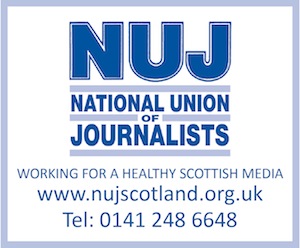NO-ONE talks down the newspaper industry better than the newspaper industry.
It is a self-obsessed, ego-driven business, full of pontificating pessimists eager to write off print and deeply wary of the web.
These cynical creatures believe we are all going to ‘hell in a handcart’.
They ignore the fact that Scotland is one of the most competitive and vibrant newspaper markets in the world. There are 21 daily titles selling more than a million copies every day and that does not include the free newspapers such as the Metro or the paid-for weeklies.
Add to that the enormous growth in online audiences and you have a thriving publishing industry.
So why does everyone believe the opposite?
The answer is the fierce competition, whereby the indigenous titles fight tooth and claw against the UK nationals who returned 20 years ago after largely having withdrawn from Scotland because of high labour and production costs.
They came back leaner, and with better and more effective technology, to grab market share of both advertising and circulation.
Stir in the recession and changing customer needs and you have a highly volatile mixture.
But media is highly adaptive. Video did not kill the radio star. Television did not kill the cinema. The internet will not kill print.
Our industry must change rapidly with all the pain that brings. Jobs will be lost, new skills will be needed.
But it will also bring rewards. Many people assume you cannot make money out of the internet. Try telling that to s1, Scotland’s premier online recruitment website and an important part of the Herald & Times Group. It is now a multi-million pound profit earner.
People also said the public will not pay for content. Well, The Herald introduced a paywall more than a year ago and the subscribers are growing every month. In fact, we recently upgraded our app and are currently averaging 100 new subscribers a week.
Many other publishers have equally exciting print and digital strategies. The latest newspaper research shows that online editions of Scottish newspapers have introduced new audiences to individual brands. Readers are increasingly unlikely to read both the print and online edition of a newspaper: 90 per cent of the Daily Record’s online audience do not read the print edition, 98 per cent of The Courier’s online audience do not read its print edition and 93 per cent of The Scotsman’s online audience do not read its print edition.
Therefore, although print readership has declined, total audience delivery is growing at a pace.
If we look at The Herald audience, in particular, in 2007 The Herald brand reached a monthly audience of 593,000 adults. It now reaches 1.2 million. The crossover between print and online is very low – 98 per cent of online users do not read the print edition.
Essentially, two separate audiences but both platforms delivering ‘hard to reach’ affluent, decision-makers.
This year-to-date, The Herald audience has increased to 1.6 million a month; that’s an increase of 33 per cent, year-on-year.
So, we should take all the doom-mongers with a ‘pinch of salt’.
Tim Blott is managing director of the Herald & Times Group and president of the Scottish Newspaper Society. A version of this was presented at ‘Securing Scotland’s Voices: The State of the Scottish National Press in the Digital Age’, hosted by the Centre for Cultural Policy at the University of Glasgow on June 4 2013.





